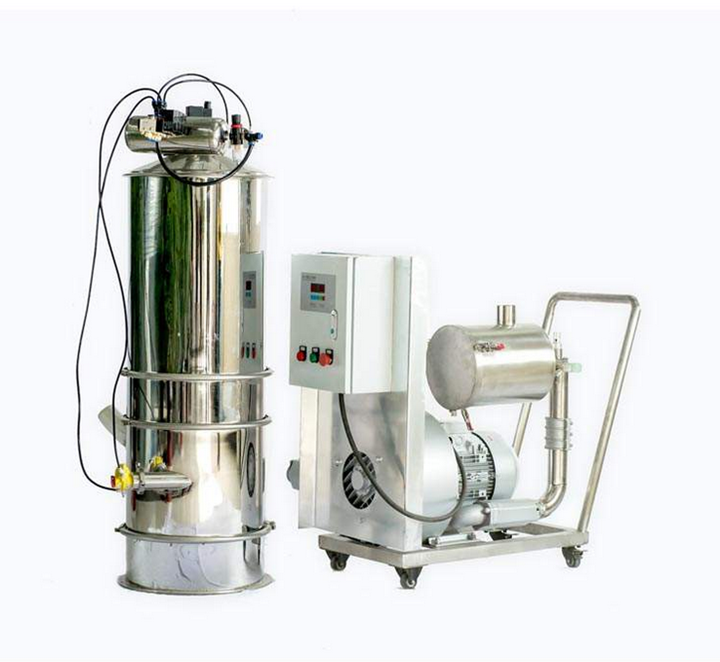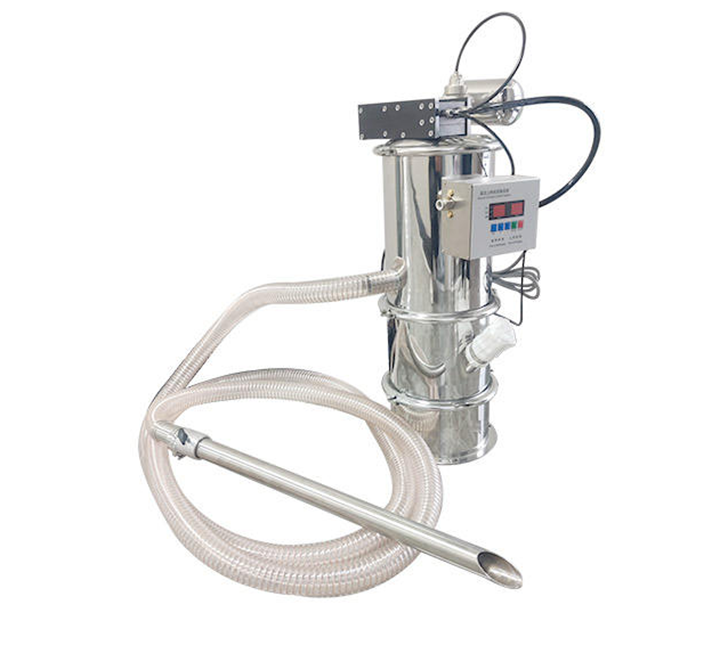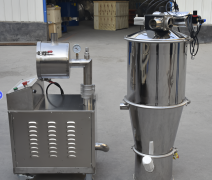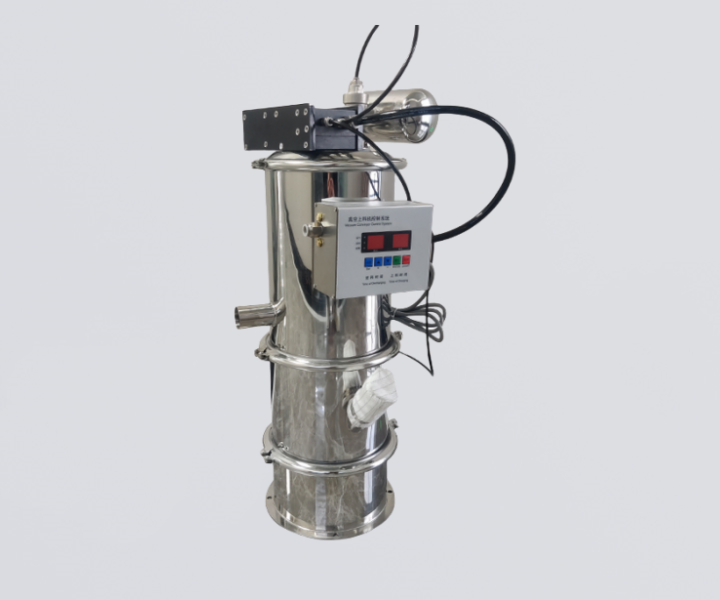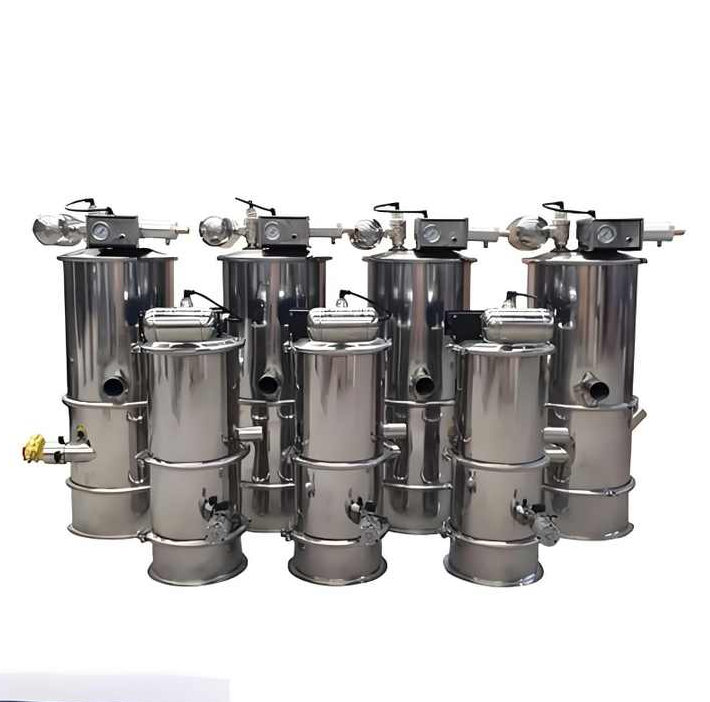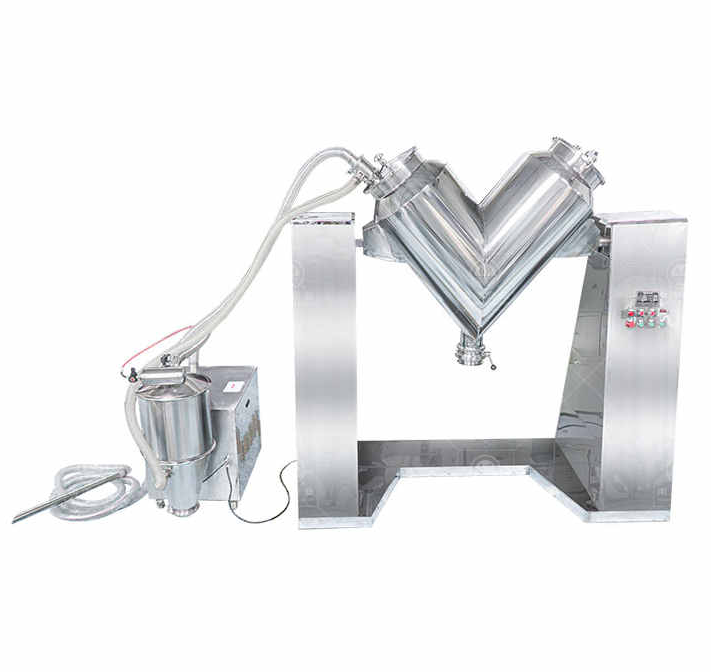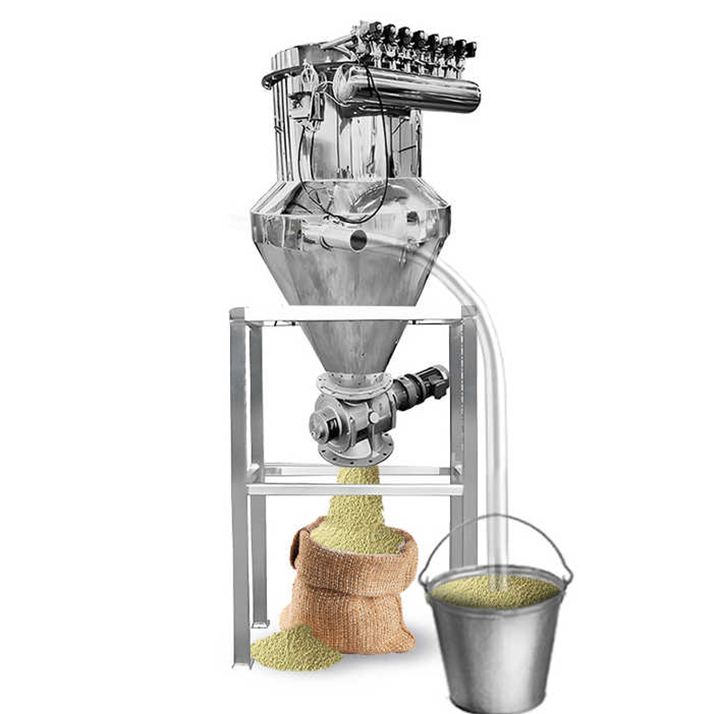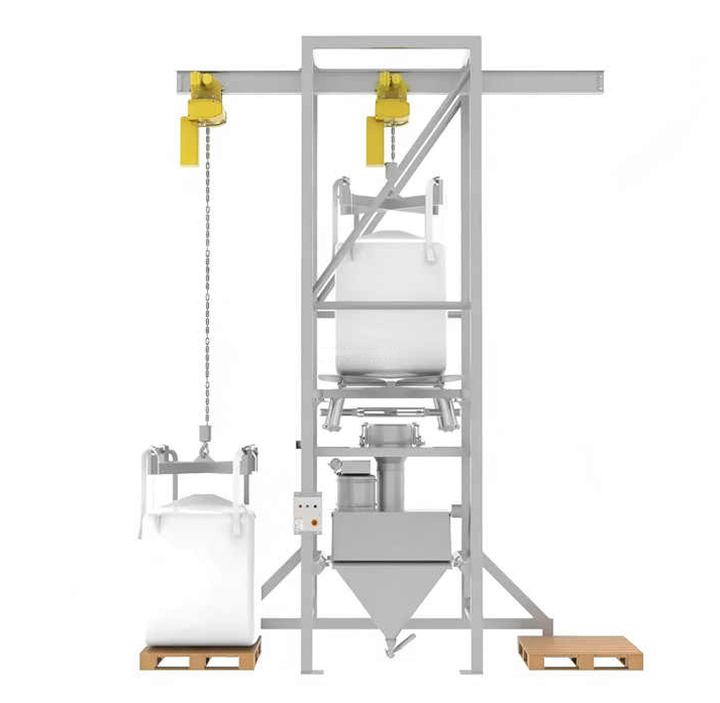
Ton Bag Feeding Station
Ton Bag Feeding Station, as an intelligent equipment integrating automatic bag breaking, dust-free conveying and precise metering, completely subverts the traditional manual feeding mode and provides a full-process solution for the unpacking and feeding of 200kg-2000kg ton bag materials.
Voltage: 380V, 220V, 415V, 440V/customizable
Power: 1.1KW
Material: Carbon steel/stainless steel
Weight (KG): 400
Electric holst speclhcations: 1-2t
Dimensions: customizable
Specifications: customizable
Wheel type: customizable
Lifting mechanism: electric, hydraulic, pneumatic, mechanical
Applicable industries: manufacturing plants, food and beverage plants, construction projects, energy and mining.
What is Ton Bag Feeding Station?
Ton Bag Feeding Station is a professional equipment for automatic unpacking and feeding of ton bag materials. It mainly handles 200kg to 2000kg of ton bag packaging materials. The equipment lifts ton bags through electric hoists, uses bag breaking mechanism to automatically cut the bottom of the bag, and cooperates with negative pressure dust suction system to achieve dust-free unloading, which can shorten the 20 minutes/bag of manual unpacking to 3 minutes/bag. At the same time, it has a variety of customized designs such as explosion-proof and anti-static.
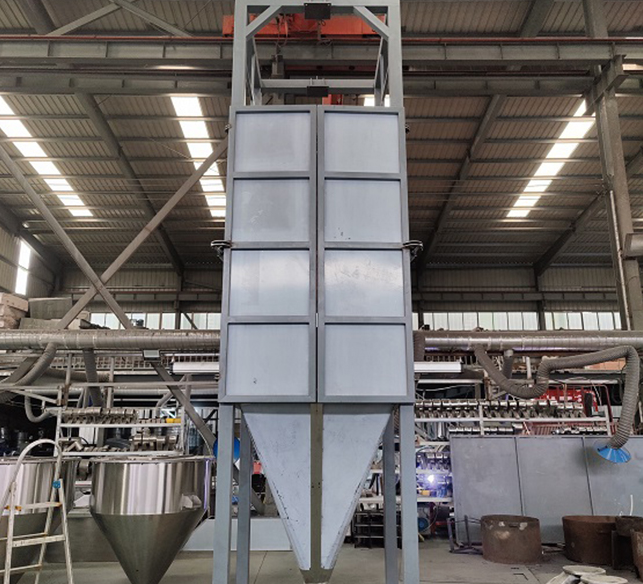
Features of Ton Bag Feeding Station
The ton bag feeding station integrates mechanical automation and intelligent control technology. Compared with traditional manual feeding, it has significant advantages in efficiency, safety, cost and other aspects.
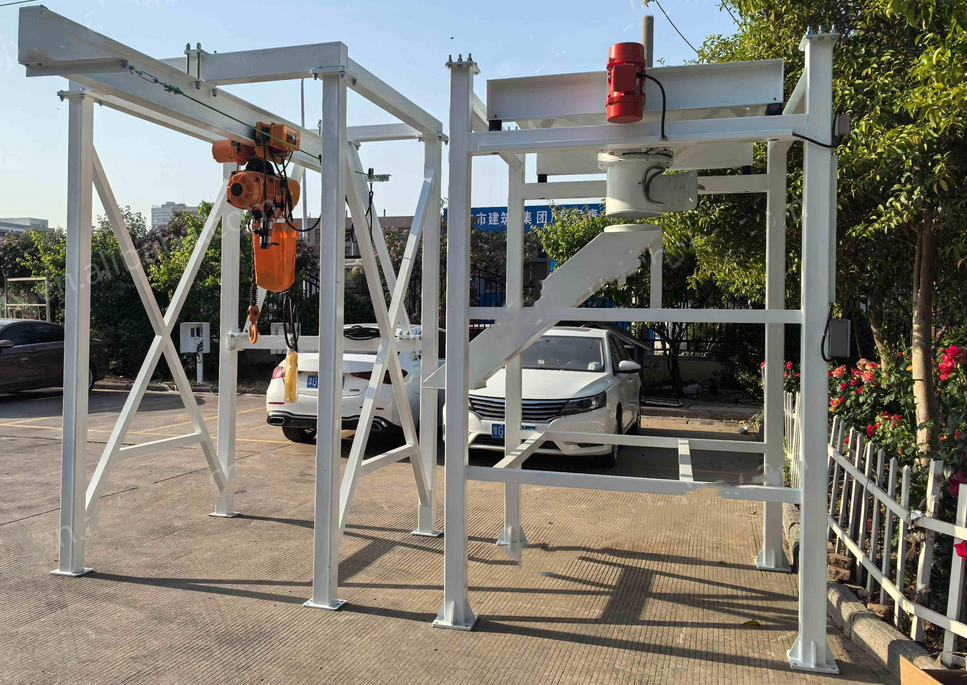
Dust-free operation: It adopts closed system design and can be equipped with dust collection device to keep the workspace clean and meet 0SHA/EPA standards.
Continuous operation: It can be connected to conveyors, screening machines or mixing equipment to achieve assembly line production and reduce intermediate links.
Ergonomic and adjustable: height-adjustable platform or hydraulic lift for handling bulk bags from 500 kg to 2,500 kg.
Customized options: add screens, magnetic separators, weighing scales or heating/cooling functions as needed.
Adapt to a variety of ton bags: compatible with ton bags of different sizes (such as slings, trays), and adjustable hanging height.
Ton Bag Feeding Station structure
The ton bag feeding station completes the whole process of ton bag material from unpacking to feeding through the precise coordination of various functional modules. Its core structure is as follows.
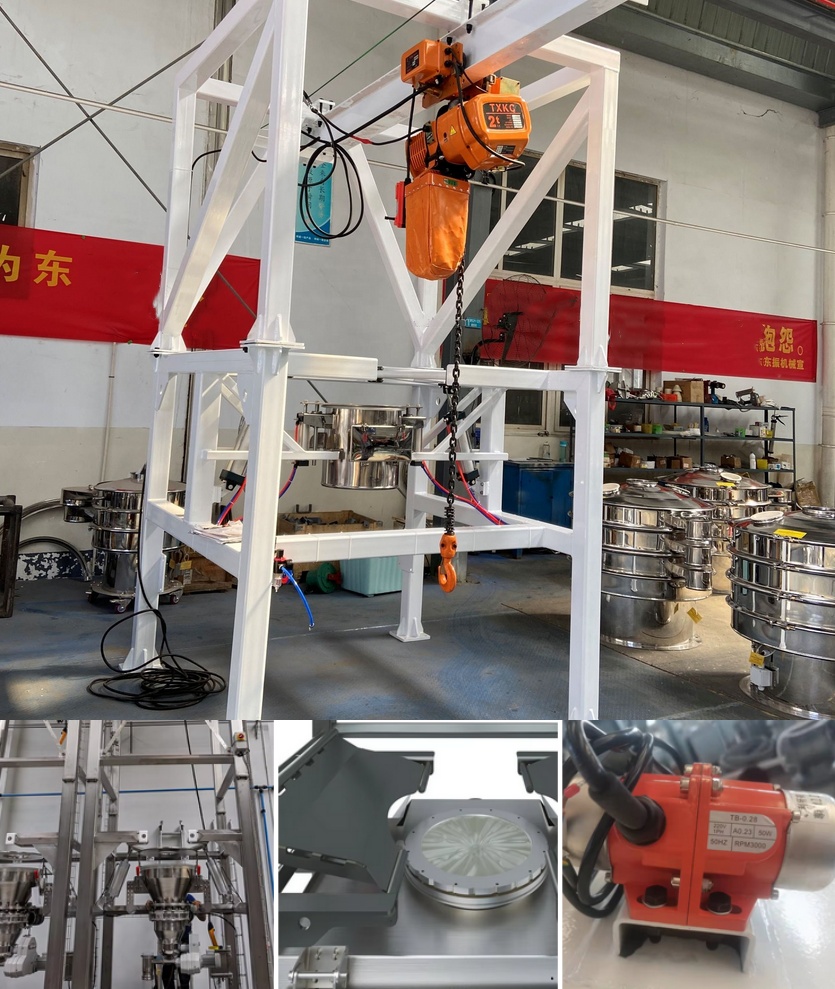
Lifting device: mainly includes electric hoist, sling and hook. The electric hoist usually has a load capacity of ≤2 tons, which can flexibly lift and lower ton bags, making it convenient to accurately lift and transport ton bags to the bag breaking station.
Bag breaking mechanism: Common ones include serrated bag breaking knives, which can cut the bottom of the ton bag through mechanical transmission and complete bag breaking within 15 seconds. They are suitable for ton bags of common materials such as PP and PE. In addition, there are scissor-type bag breaking, rotary blade bag breaking and other forms, which can be selected according to the characteristics of the material.
Bag shaping device: Some feeding stations are equipped with this device, which can squeeze and shape the ton bag, so that the material can slide smoothly, improve the unloading rate, and increase the unloading rate from 85% to 99%.
Working principle of Ton Bag Feeding Station
The ton bag unpacking machine uses an electric hoist or forklift to lift the ton bag to the feeding port, press the bag, open the ton bag unloading port, and use a beating device or a vibration device to make the material fall into the hopper below. Then the material is sorted by a vibrating screen in a sealed environment or directly transported to the downstream equipment; finally, the pulse dust removal system captures the dust generated during the operation in real time to ensure a clean working environment.
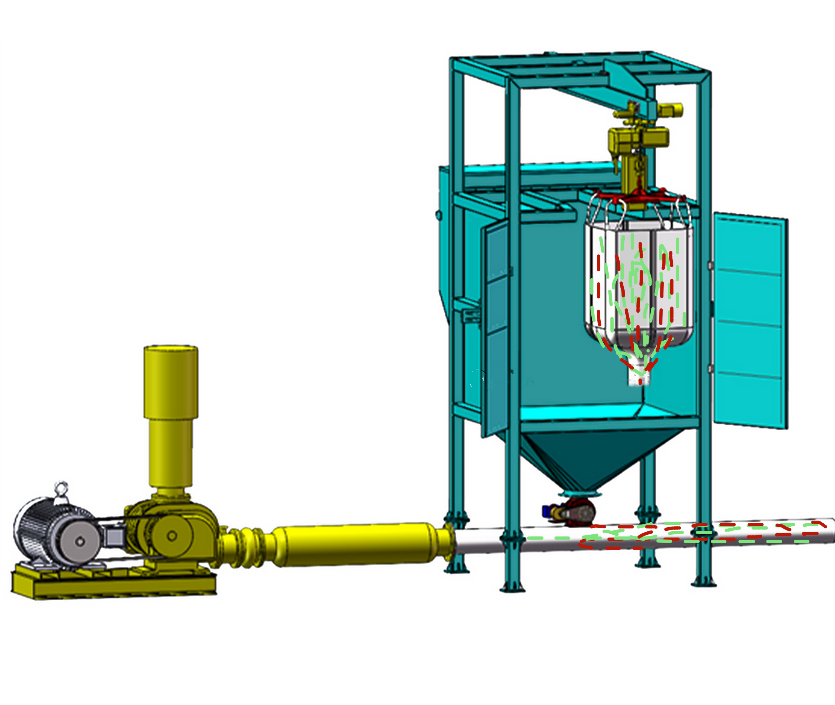
Model parameters
|
Technical parameter |
||||||
|
Model |
Length x width |
Electric holst speclhcations |
Dust removal fan power |
A(mm) |
B(mm) |
C(mm) |
|
HC800 |
800x800 |
1T |
1.1kw |
2000 |
1530 |
3650 |
|
HC1000 |
1000x1000 |
2T |
1.1kw |
2270 |
1530 |
4200 |
|
HC1400 |
1400x1400 |
2T |
1.1kw |
2500 |
1930 |
4500 |
Ton Bag Feeding Station application scenarios
Due to its high efficiency, safety and environmental protection, ton bag feeding stations are widely used in industries that need to handle large-volume bulk materials.
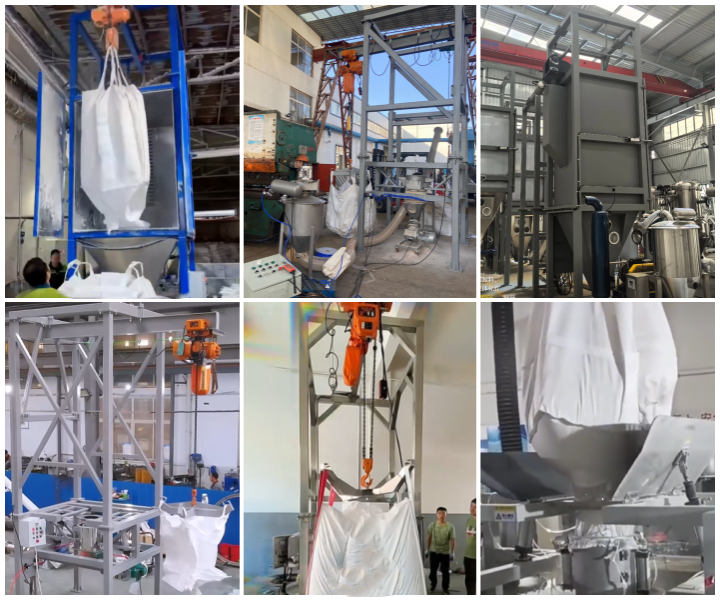
Chemical industry: In the chemical industry, ton bag feeding stations can handle powder/granular raw materials and toxic and hazardous chemicals. Chemical plants unload titanium dioxide through closed feeding stations to avoid the risk of dust explosion and ensure production safety.
Food and agricultural product processing: The food industry uses ton bag feeding stations to achieve efficient feeding of bulk raw materials such as grain, sugar and salt, as well as pollution-free transfer of food additives. Flour mills use them to unload imported wheat flour and screen out impurities to meet strict food hygiene requirements.
Pharmaceuticals and health products: For the pharmaceutical industry, ton bag feeding stations achieve dust-free feeding of raw materials and excipients and closed processing of highly active ingredients. Negative pressure feeding stations in pharmaceutical workshops prevent cross contamination and ensure the quality of drugs.
Building materials and metallurgy: In the building materials and metallurgy industries, ton bag feeding stations are used to handle heavy materials such as cement and mineral powder and metal powder. Concrete mixing stations can quickly unload cement and use screw conveyors to improve efficiency.
New energy and electronic materials: In the field of new energy and electronic materials, ton bag feeding stations help lithium battery materials to be accurately fed and photovoltaic materials to be unloaded with anti-static electricity. Lithium battery factories use nitrogen to protect feeding stations to prevent electrode material oxidation, and electronic-grade silicon powder is connected to the air flow conveying system through it to meet the industry's high-precision production needs.
What are the functions of the Ton Bag Feeding Station?
The ton bag feeding station can automatically lift and unload bags, and achieve dust-free operation through negative pressure dust suction. It has functions such as high degree of automation, good dust control, and adaptability to different ton bags and materials.

Ton bag lifting and fixing: The ton bag is lifted to the feeding station by an electric hoist or crane, and the ton bag is fixed with a clamp or hook.
Automatic bag removal: The bottom of the ton bag is automatically opened and the material is released through a cutting device or a bag unpacking device.
Dust-free feeding: Equipped with a dust removal system to prevent dust from being generated during the feeding process and ensure a clean working environment.
Vibration-assisted unloading: through vibration devices or slapping devices, ensure that the materials in the ton bag are completely unloaded to avoid residue.
What equipment can be connected to the unloading port of the ton bag feeding station?
The unloading port of the ton bag unpacking machine can be connected to the material bin, screw conveyor, rotary unloading valve, crusher, electromagnetic iron remover, vacuum feeder and other equipment.
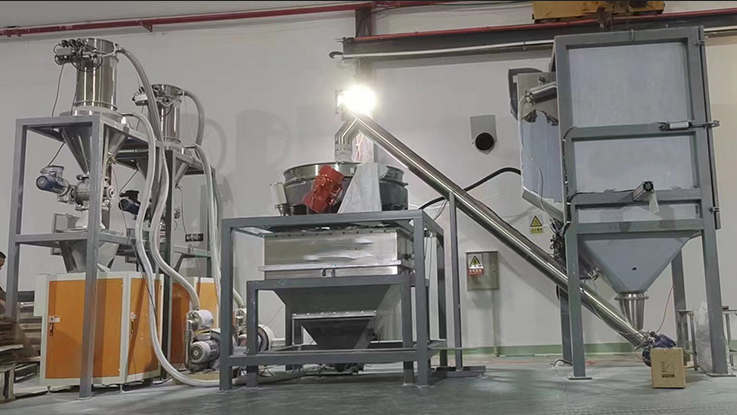
Receiving silo: suitable for scenes such as temporary storage of chemical raw materials and transfer of food raw materials. The standard material level meter monitors the inventory in real time and links the start and stop of the unpacking machine. The unloading angle of the conical silo bottom is ≥60° to prevent material bridging.
Screw conveyor: suitable for powder and granular materials such as cement and resin powder. The fully enclosed pipeline conveys powder to prevent dust leakage. It can be tilted 45° or horizontally conveyed ≤30 meters.
Rotary unloading valve: as the control hub of the pneumatic conveying entrance, the speed is adjustable from 5-30rpm, and the unloading amount is accurately controlled from 0.5-20m³/h.
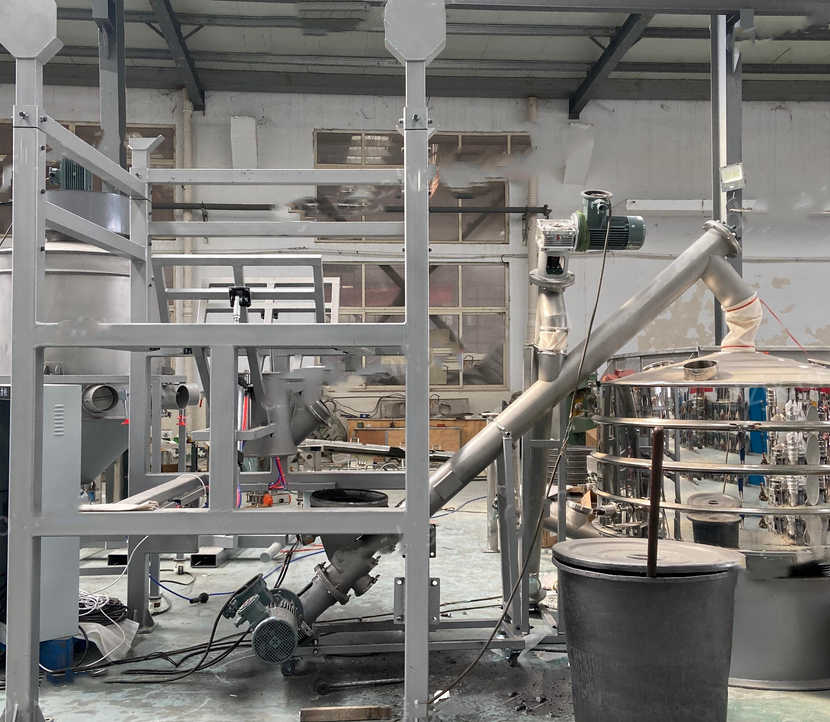
Crusher: Suitable for materials such as agglomerated resins and fertilizers. The tooth roller crushing chamber has a crushing ratio of 10:1, and the built-in screening net ensures uniformity.
Electromagnetic iron remover: It can absorb iron filings ≥0.1mm, with a removal efficiency of 99.8%. It is suspended and installed above the discharge port, and the magnetic field strength is ≥12000 Gauss.
Vacuum feeder: Negative pressure suction conveying distance ≤50 meters, lifting ≤15 meters, and pharmaceutical grade 316L stainless steel electropolished mirror meets GMP standards.
Ton Bag Feeding Station is suitable for different types of ton bags
The ton bag feeding station has a high degree of ton bag adaptability and can provide customized processing solutions for ton bags of different specifications, materials and loading materials.
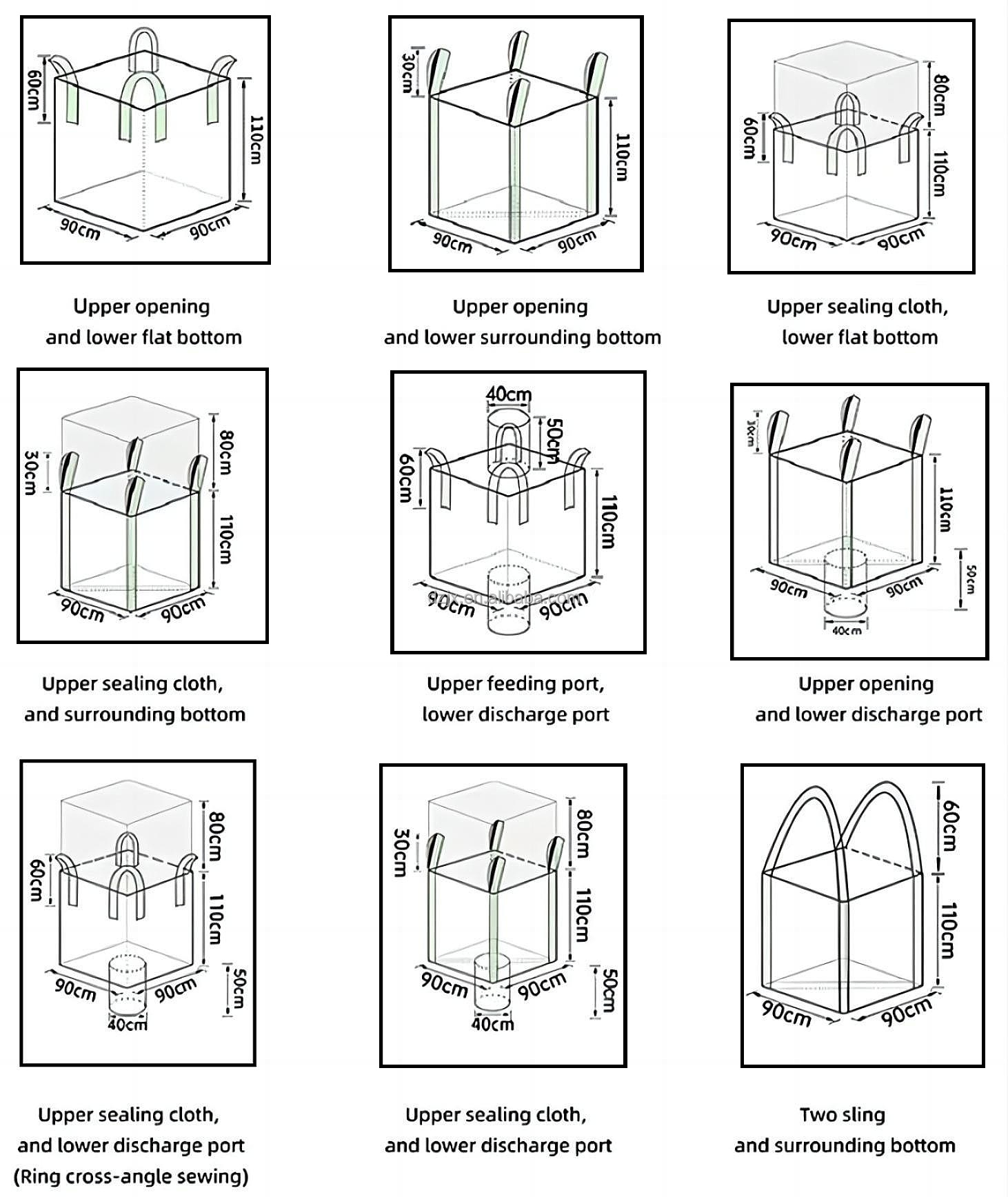
Capacity coverage: Supports 200kg~2000kg standard ton bags. Through the load-bearing range of the electric hoist and the adjustable lifting mechanism, it is compatible with common tonnages such as 1 ton, 1.5 tons, and 2 tons.
Size compatibility: The opening size of the bag-breaking bin of the feeding station can be customized to fit ton bags with a length × width of 900mm×900mm~1400mm×1400mm. The height direction is adjusted by the lifting platform (1.2~2.5 meters) to adapt to different stacking heights.
PP/PE woven bags: The serrated bag-breaking knife can cut easily, and the negative pressure vacuum can prevent fiber dust;
Aluminum foil composite bags: The blunt knife is used to cut to avoid metal debris from contaminating materials (such as lithium battery positive electrode materials)
Anti-static ton bags: Equipped with a grounding device to eliminate the risk of static electricity accumulation (applicable to electronic grade silicon powder)
Ton Bag Feeding Station supports customized solution design
The following are customized production line solutions for ton bag feeding stations for three different industries, covering chemical, food and new energy industries.
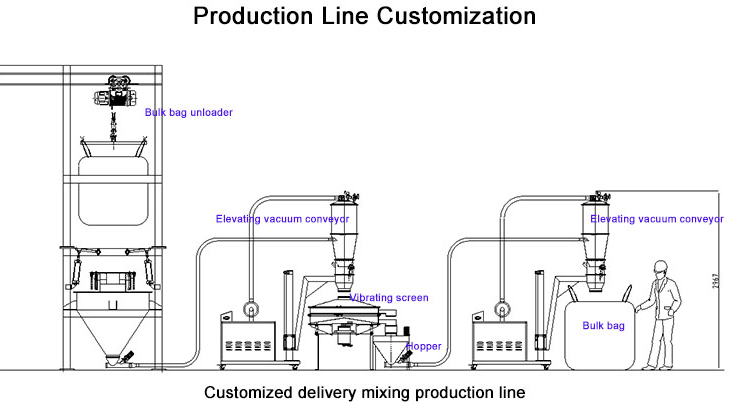
Chemical industry: Applicable to PE/PP plastic granules, masterbatch and other materials. The process is ton bag feeding station (dust removal) → vibrating screen impurity removal → electromagnetic iron removal → screw conveyor to mixer → high-speed mixing → weight loss scale metering → twin screw extrusion granulation → cooling and pelletizing → packaging. The core advantage is the full closed explosion-proof process, and the automatic mixing and metering ensures the consistency of the formula.
Food industry: Use stainless steel ton bag feeding station → vibrating screen agglomeration treatment → vacuum feeding to temporary storage warehouse → metering scale proportioning → mixer uniform stirring → 25kg packaging. The equipment complies with FDA/GMP standards, and the easy-to-clean design reduces the risk of artificial contamination.
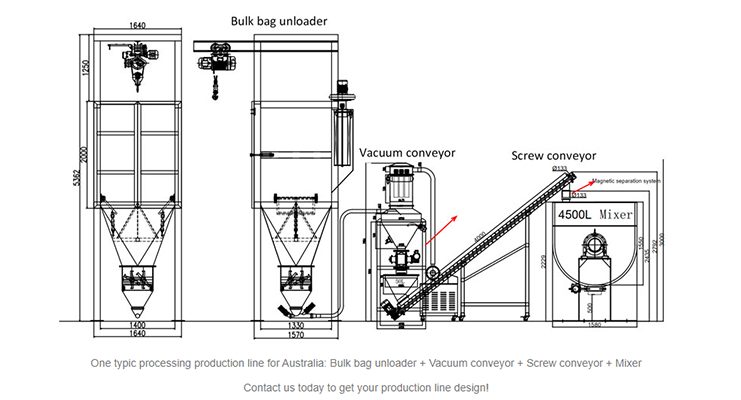
New energy industry: For materials such as lithium iron phosphate, the process is nitrogen protection ton bag feeding station → rotary discharge valve speed control → air flow conveying to sintering furnace → high-temperature sintering → crusher coarse crushing → air flow classification screening particle size → ton bag packaging. The fully enclosed system is anti-static and explosion-proof, isolating moisture and oxygen to ensure the activity of the material.
Ton Bag Feeding Station Manufacturer
We focus on the research and development of material handling equipment and have made remarkable achievements in the field of ton bag feeding stations. We have gathered a professional technical team and integrated advanced technology. The ton bag feeding stations we produce are suitable for ton bags of various specifications from 200 to 2000kg. Made of 304 stainless steel/carbon steel, with negative pressure dust collection, the dust leakage is very low. With functions such as automatic bag breaking and intelligent material control, it can provide customers with a professional one-stop production process solution.
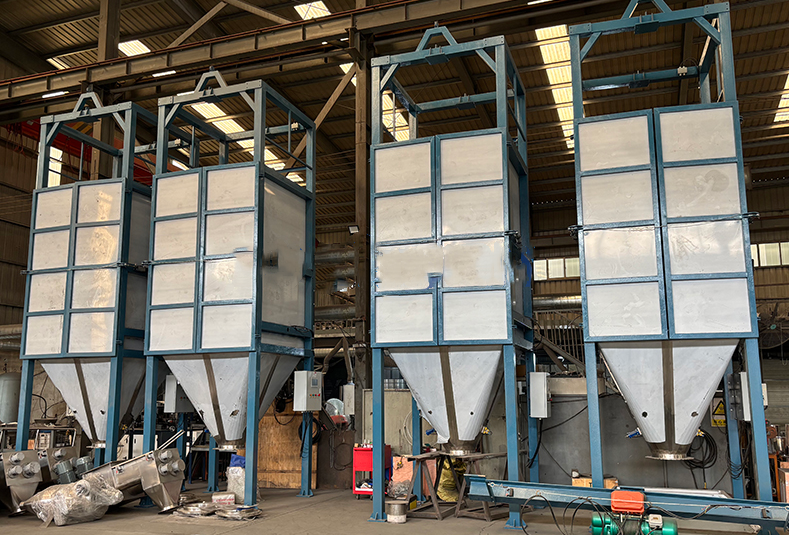
As a material handling hub in modern industry, the ton bag feeding station is reshaping the traditional feeding process with its fully sealed structure, intelligent control and modular design, and has become a core equipment for improving production efficiency and ensuring environmental safety.
